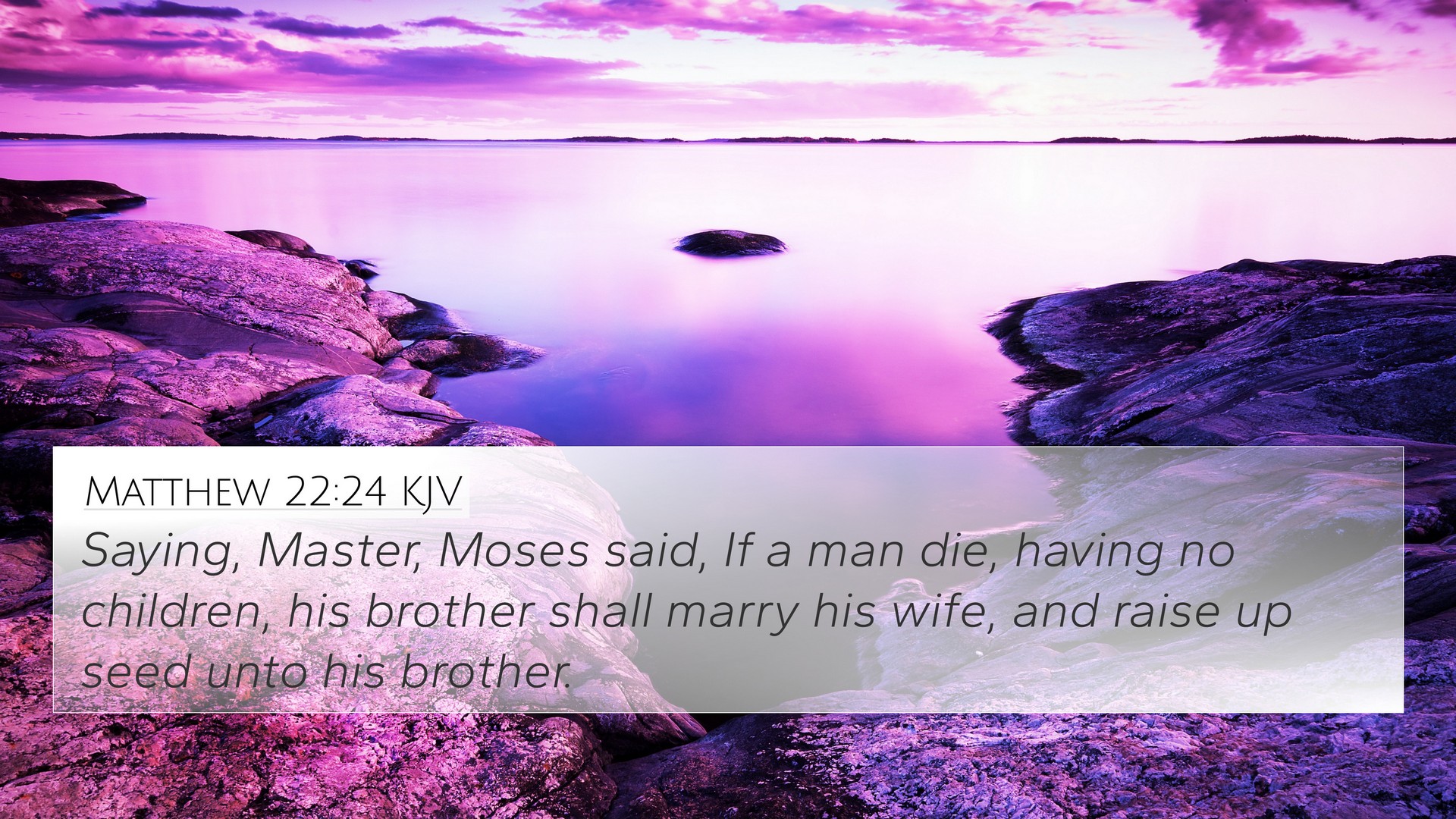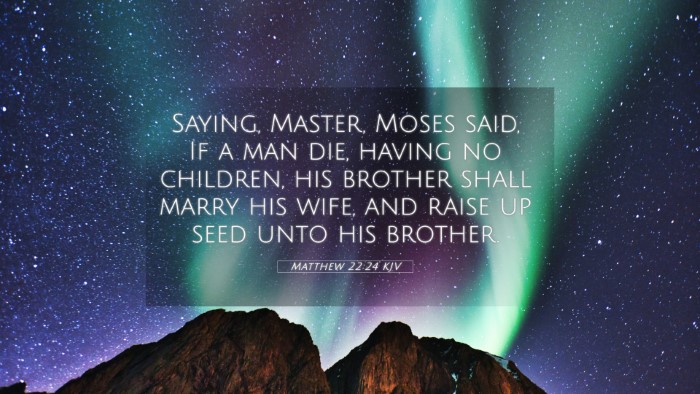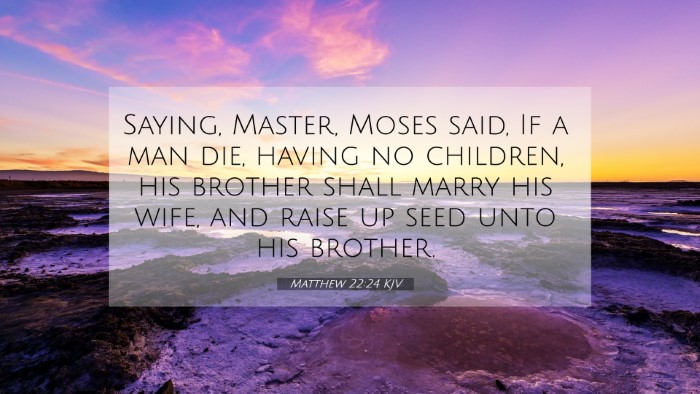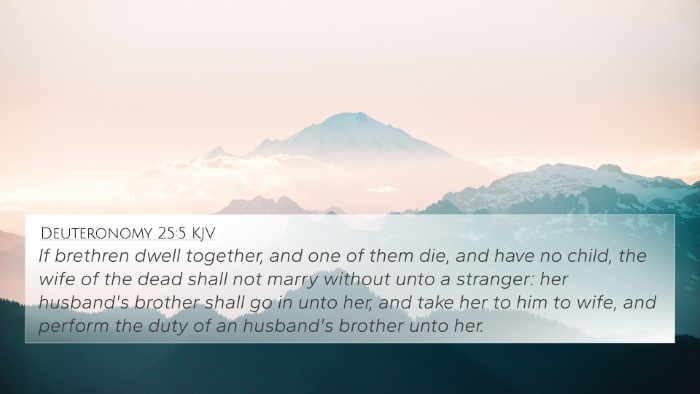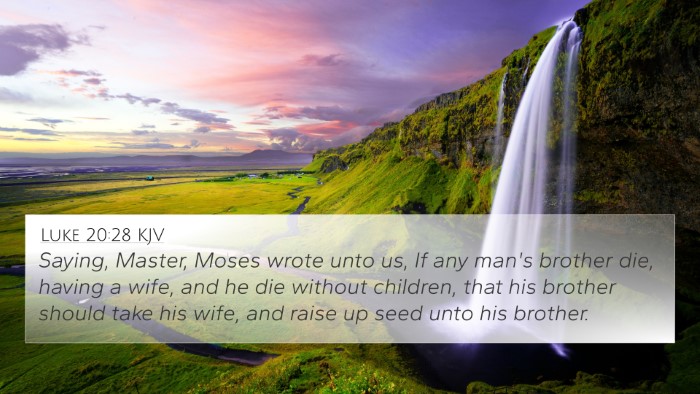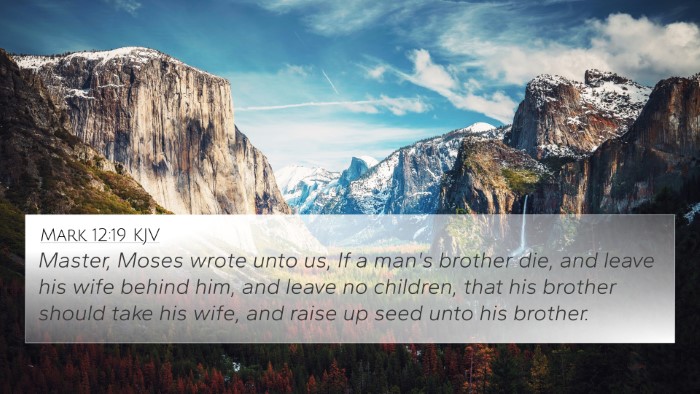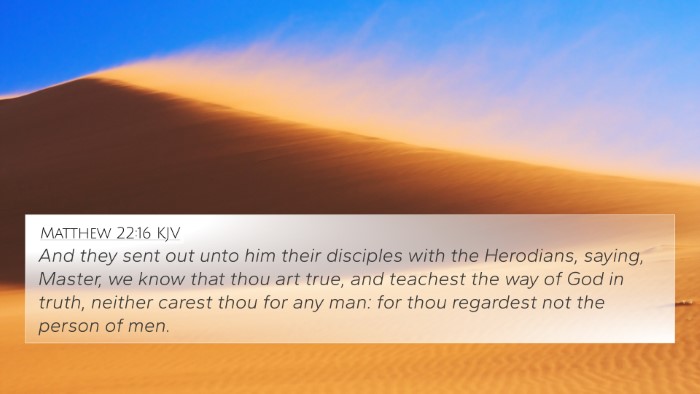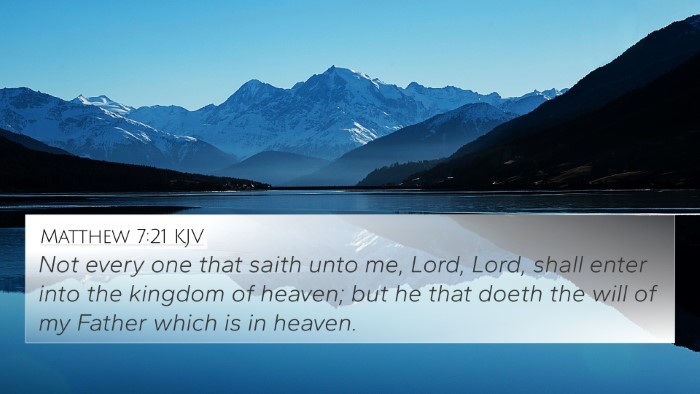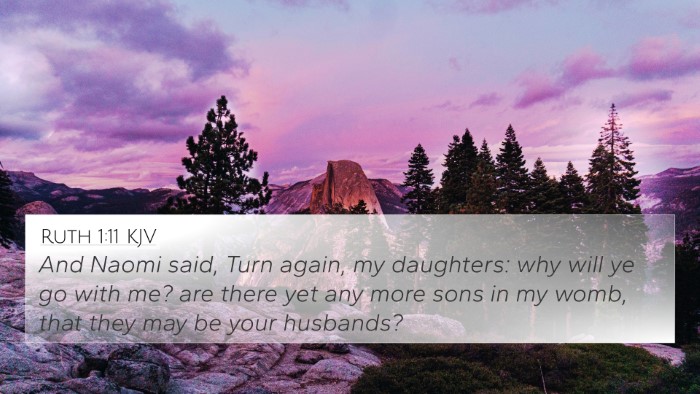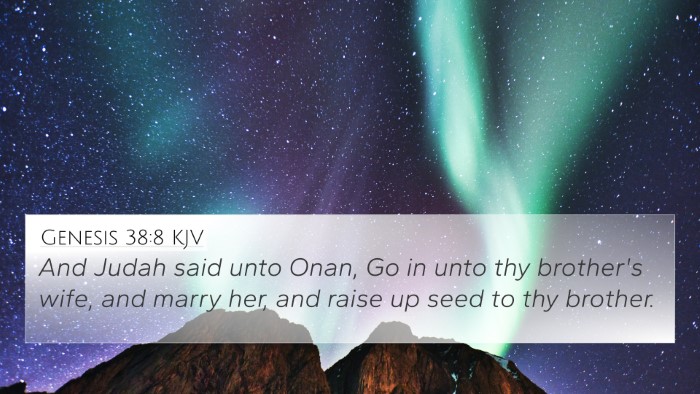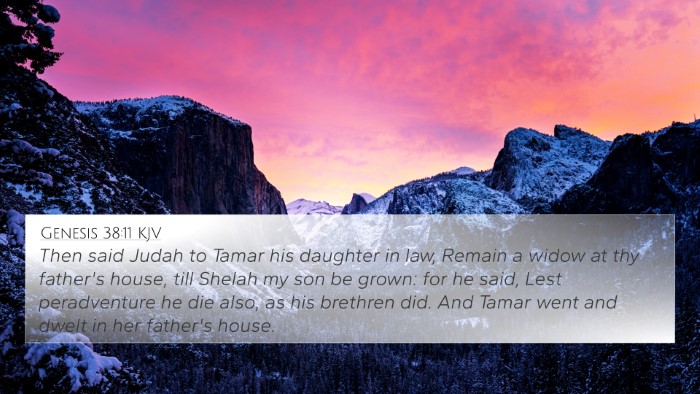Understanding Matthew 22:24
Matthew 22:24 states, "Teacher, Moses said that if a man dies without having children, his brother must marry the widow and have children for him." This verse captures a dialogue during which the Sadducees challenge Jesus by referring to the law of Moses regarding levirate marriage.
To fully grasp the meaning of this verse, it requires an examination of the cultural, historical, and theological context provided by various public domain commentaries. Below, combined insights from notable scholars, including Matthew Henry, Albert Barnes, and Adam Clarke, illuminate the depth of this scripture.
Contextual Background
In this passage, the Sadducees, a sect who denied the resurrection, present a hypothetical dilemma based on scripture to undermine Jesus' teachings concerning life after death. Their challenge relates to Deuteronomy 25:5-10, where the law commanded that a brother marry a widow to preserve the family line.
Commentary Insights
-
Matthew Henry:
Henry emphasizes the Sadducees' intention to ridicule the doctrine of resurrection by presenting an exaggerated scenario. He suggests that their argument reflects a misunderstanding of God's power and the nature of eternal life, highlighting that in the resurrection, earthly marital relations are transformed.
-
Albert Barnes:
Barnes draws attention to the importance of the law of Moses and how it was recognized by the Jews. He outlines that the Sadducees were testing Jesus’ adherence to the law while also attempting to cast doubt on the resurrection. He elaborates on the implications of the levirate law concerning familial duty and legacy.
-
Adam Clarke:
Clarke offers a detailed analysis of the levirate marriage, explaining its role within Jewish culture. He notes that the Sadducees’ question reveals their ignorance of the transformative nature of life in the resurrection, encouraging readers to consider the deeper truths within God's promises.
Theological Themes
This passage invites readers to reflect on various theological themes:
- Resurrection: The Sadducees’ views illustrate the conflict between belief in the resurrection and adherence to the law.
- God's Plan: The levirate marriage reflects God's provision for lineage and legacy, but the ultimate purpose is rooted in the resurrection promise.
- Faith and Understanding: The dialogue between Jesus and the Sadducees highlights the necessity of faith in accepting the mysteries of God.
Cross-References
For a deeper understanding of Matthew 22:24, consider the following cross-references:
- Deuteronomy 25:5-10: The original law regarding levirate marriage.
- Mark 12:19: A parallel account of the Sadducees' question to Jesus.
- Luke 20:28: Another Gospel's account highlighting the same dialogue.
- Matthew 22:30: Jesus' teaching on resurrection life beyond earthly marriage.
- John 11:25-26: Jesus declaring Himself as the resurrection and the life.
- Romans 7:2-3: Paul’s teaching on marital laws and the law’s relation to death.
- 1 Corinthians 15:12-22: Discussing the resurrection of the dead and its foundational importance in Christian faith.
Application in Bible Study
Engaging with passages like Matthew 22:24 can be enriched through tools for Bible cross-referencing. Understanding the connections between Bible verses entails methods like:
- Bible Concordance: Use a concordance to locate key terms related to resurrection and levirate marriage.
- Bible Cross-Reference Guide: Studying related verses deepens the comprehension of overarching themes.
- Cross-Referencing Bible Study Methods: Utilize thematic studies to draw connections across both Old and New Testaments.
Conclusion
Matthew 22:24 serves not only as a historical account but as an invitation to reflect on the significant themes of resurrection and divine purpose. By utilizing various commentaries and cross-referencing biblical texts, individuals can enrich their understanding and appreciation of scripture.
